OB Exam 4 Lecture & Terminology
1/231
Earn XP
Description and Tags
ch. 20 (postpartum anatomic & physiologic changes), ch. 21 (nursing care of the family during the postpartum period), ch. 22 (transition to parenthood), ch. 25 (newborn nutrition & feeding), ch. 31 (mental health disorders & substance abuse), ch. 33 (postpartum complications)
Name | Mastery | Learn | Test | Matching | Spaced |
|---|
No study sessions yet.
232 Terms
ch. 20 - lasts up to 12 weeks as the body returns to its nonpregnant state, requiring holistic care for mother, infant, and family
the postpartum period
ch. 20 - is the process of the uterus returning to its nonpregnant state, typically completed by 6 weeks postpartum, with the fundus descending 1–2 cm daily
involution
ch. 20 - the uterus shrinks from ~1000 g at term to ~100 g by __________ postpartum
4 weeks
ch. 20 - hormone drop triggers tissue breakdown; __________ is often due to retained placenta or infection
subinvolution
ch. 20 - are stronger with later births, overdistention, breastfeeding, or oxytocin, and resolve in 3–7 days
afterpains
ch. 20 - is postbirth uterine discharge lasting 4–6 weeks, heaviest in the first 2 hours, and reflects uterine healing
lochia
ch. 20 - bright red discharge in the first 1–3 days, containing blood, tissue debris, and newborn substances
lochia rubra
ch. 20 - pinkish-brown discharge from days 4–10, with blood, exudate, WBCs, and microorganisms
lochia serosa
ch. 20 - whitish-yellow discharge from day 10 up to 6 weeks, mainly composed of WBCs and tissue debris
lochia alba
ch. 20 - trickles steadily and may briefly gush with uterine massage; dark color indicates pooled blood that lightens to bright red
lochial bleeding
ch. 20 - bright red, excessive, or spurting blood with a firm uterus suggests possible cervical or vaginal tears
nonlochial bleeding
ch. 20 - is present at birth; mature milk (“milk coming in”) usually begins 72–96 hours postpartum during lactogenesis II
colostrum
ch. 20 - become fuller, warm, tender, and may feel nodular due to milk production; nodularity shifts unlike in fibrocystic changes
breasts
ch. 20 - can cause discomfort, mild fever, and latching issues, but typically resolves within 24–48 hours with frequent breastfeeding
engorgement
ch. 20 - may rise to 38°C (100.4°F) in the first 24 hours due to labor; persistent fever after 24 hours may indicate infection (e.g., sepsis, UTI, mastitis)
temperature
ch. 20 - is elevated initially, then gradually decreases; bradycardia is common, but a rising or rapid pulse may signal hemorrhage
pulse
ch. 20 - should return to baseline quickly; respiratory depression may occur after high spinal or epidural opioids
respirations
ch. 20 - may slightly rise, then normalize; hypotension can indicate hemorrhage, while hypertension may signal preeclampsia or medication effects
blood pressure
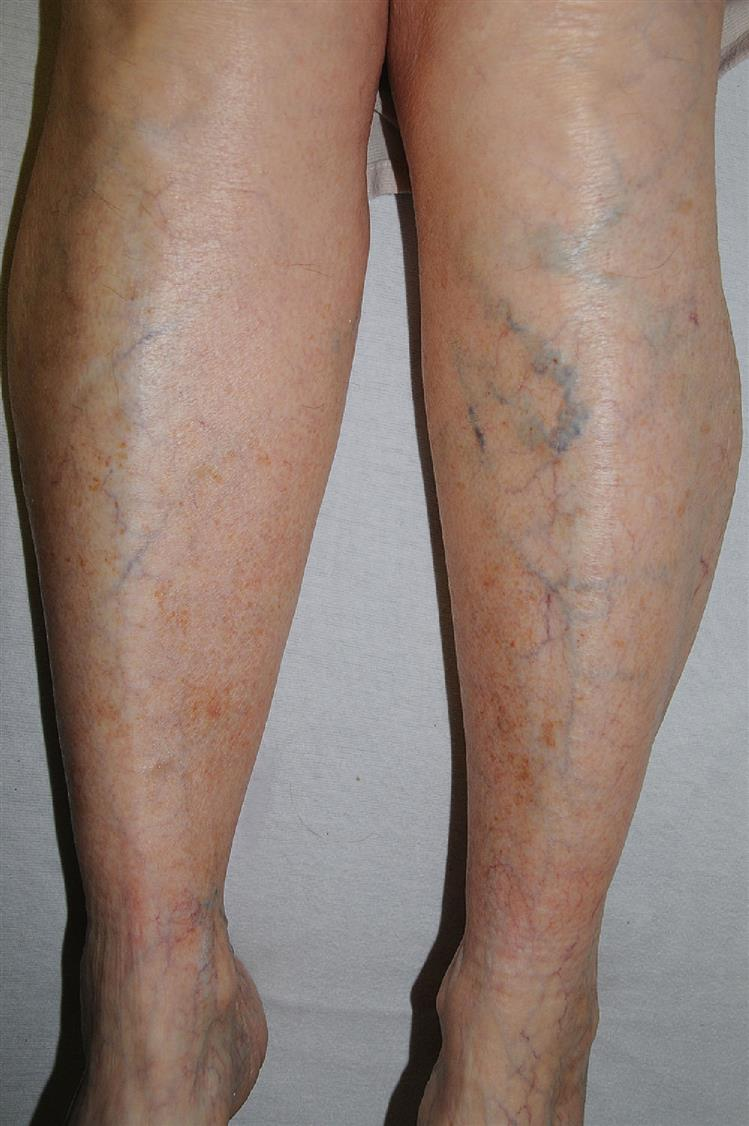
ch. 20 - varicosities, including __________, are common in pregnancy and typically regress rapidly after birth
hemorrhoids and vulvar varices
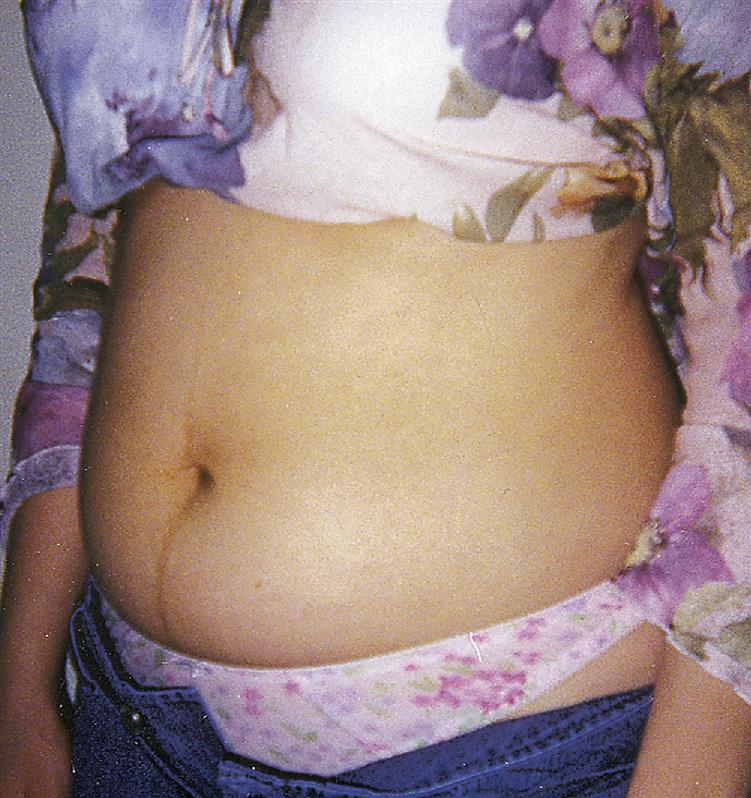
ch. 20 - the abdominal wall remains relaxed and may appear pregnant for up to __________ postpartum, typically returning near prepregnancy tone by 6 weeks
2 weeks
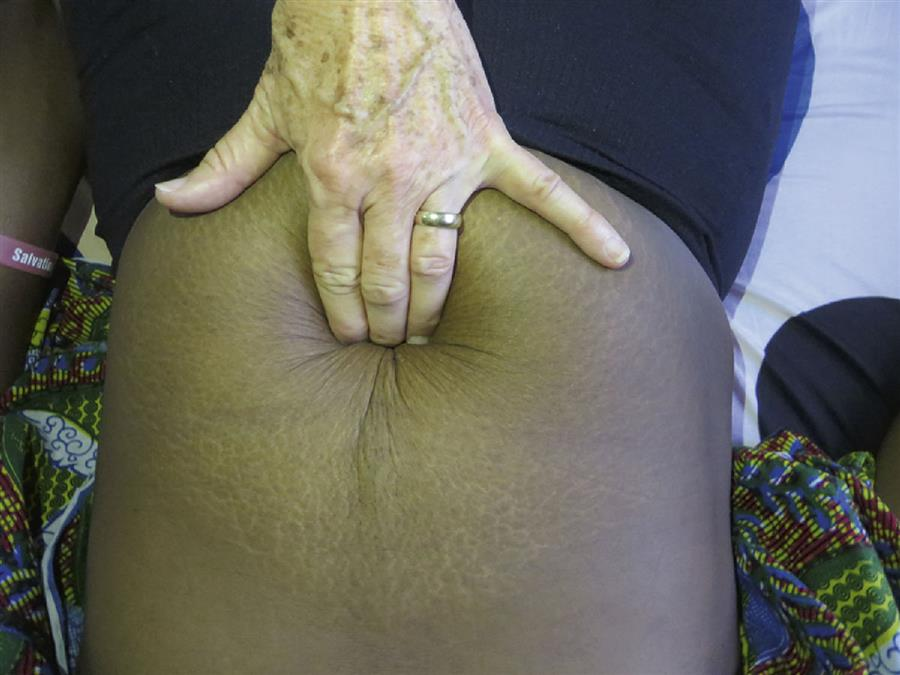
ch. 20 - return of muscle tone varies by prior fitness, exercise, and body fat; __________ may occur but usually improves over time without surgery
diastasis recti
ch. 21 - postpartum care uses a __________ model where one nurse cares for both mother and infant, coordinating care around the newborn’s needs
couplet
ch. 21 - slight increase or orthostatic hypotension normal; persistent high or low may indicate preeclampsia or hemorrhage
blood pressure
ch. 21 - up to 38°C (100.4°F) normal in first 24 hrs; sustained fever suggests infection
temperature
ch. 21 - 50–90 bpm normal; tachycardia may indicate pain, fever, dehydration, or hemorrhage
pulse
ch. 21 - 16–20/min expected; bradypnea or tachypnea may reflect opioids, anxiety, or respiratory issues
respirations
ch. 21 - breath sounds should be clear; crackles suggest fluid overload; __________ progress from soft to full; pain or heat may signal engorgement
breasts
ch. 21 - intact, no pain; damage or soreness suggests poor latch
nipples
ch. 21 - firm, midline, descending 1 cm/day; boggy or high fundus may mean atony or full bladder
uterus
ch. 21 - rubra to serosa to alba progression; heavy, clots, or foul odor indicate complications
lochia
ch. 21 - mild edema normal; infection or hematoma suspected with severe pain, bruising, or drainage
perineum
ch. 21 - no or soft hemorrhoids expected; thrombosed hemorrhoid is painful and discolored
rectal area
ch. 21 - spontaneous voiding normal; distention or infection causes lochia issues or dysuria
bladder
ch. 21 - soft with bowel sounds; constipation, diarrhea, or wound issues may indicate complications
abdomen/bowels
ch. 21 - 1+ to 2+ DTRs normal; hyperreflexia or Homan’s sign may indicate preeclampsia or thrombophlebitis
legs
ch. 21 - normal energy allows self and infant care; extreme fatigue may suggest depression
energy level
ch. 21 - should be happy and involved; persistent sadness or disinterest suggests postpartum depression
emotional status
ch. 21 - saturating a perineal pad in 15 minutes or less or blood pooling under the buttocks signals _____ and requires immediate action and provider notification
excessive blood loss
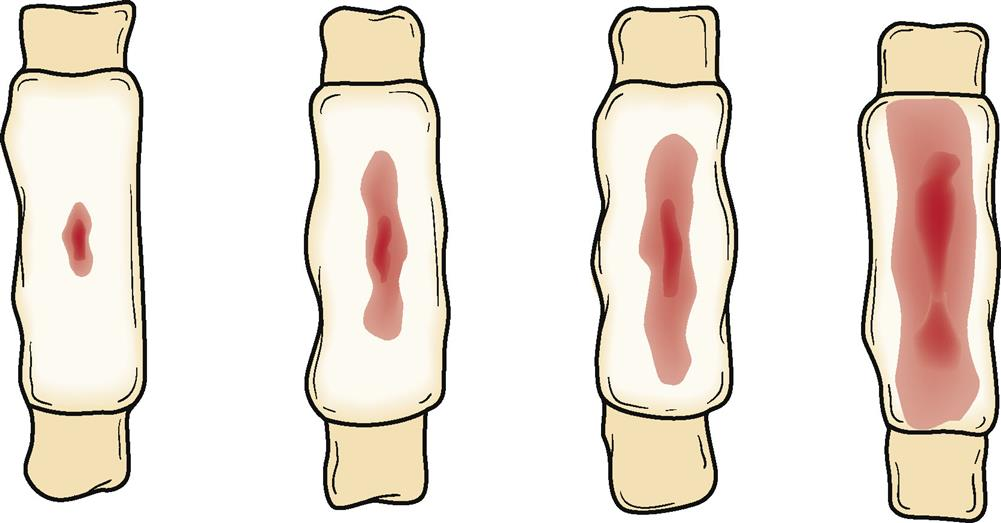
ch. 21 - nurses must accurately estimate blood loss by visually assessing __________, described as scant, light, moderate, or heavy
pad saturation
ch. 21 - always check __________ for hidden blood loss, as bleeding may bypass the pad and soak into linens unnoticed
under the buttocks
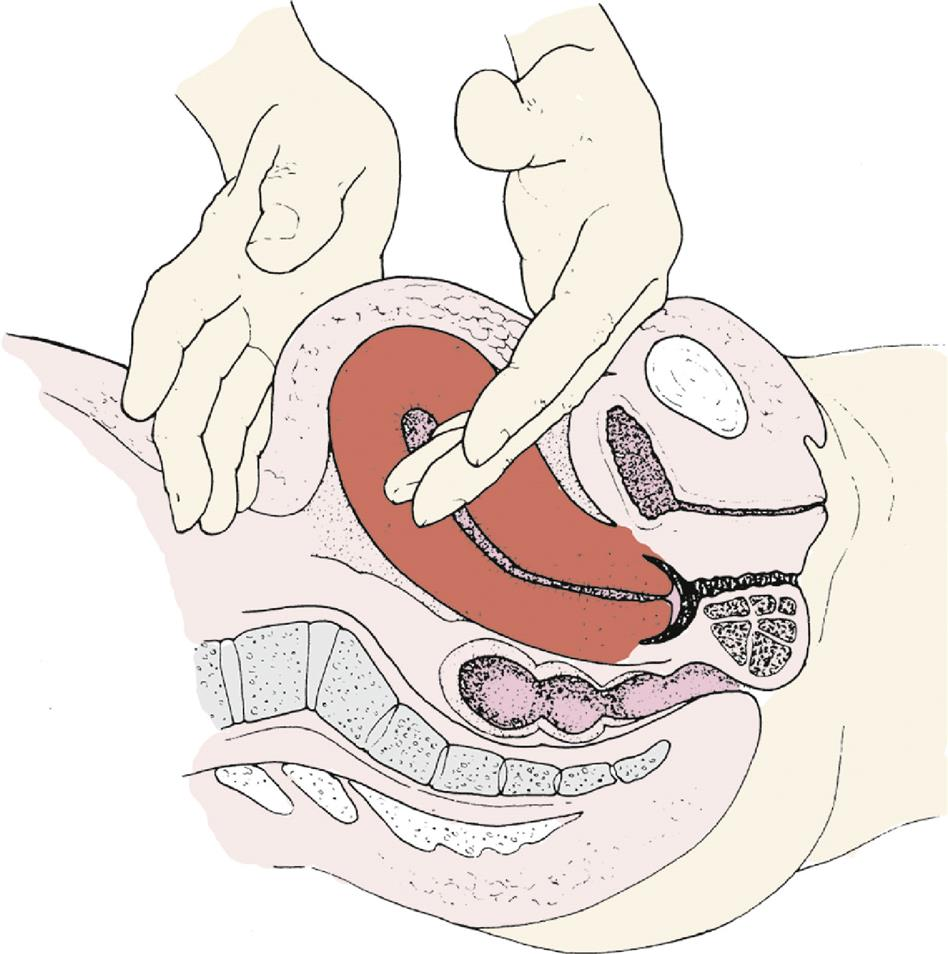
ch. 21 - is key to treating uterine atony, though it may temporarily increase bleeding and expel clots
gentle fundal massage
ch. 21 - wash perineum daily with mild soap and warm water; change pads front to back at least 4 times daily and after voiding/defecation
cleansing
ch. 21 - apply to perineum during the first 24 hours to reduce swelling; continue as needed for comfort
ice pack
ch. 21 - use warm water to rinse perineum after toileting; blot dry and wipe front to back before applying a clean pad
peri bottle
ch. 21 - use warm or cool water, soak 20 minutes twice daily, ensure comfort, privacy, and monitor during use
sitz bath - built-in
ch. 21 - fill with warm water, set up on toilet, regulate flow, and follow same instructions as built-in type
sitz bath - disposable
ch. 21 - apply anesthetic spray, witch hazel pads, or hemorrhoid cream sparingly after cleansing, as ordered
topical care
ch. 21 - reported __________ despite medication warrants immediate perineal assessment to rule out hematoma, infection, or rare serious complications
extreme perineal pain
ch. 21 - monitor mothers on __________ for CNS depression; use safety measures during ambulation and infant care to prevent injury
opioids
ch. 21 - to prevent falls, assist postpartum women the first time they get out of bed and instruct them to call for help if feeling __________
dizzy or weak
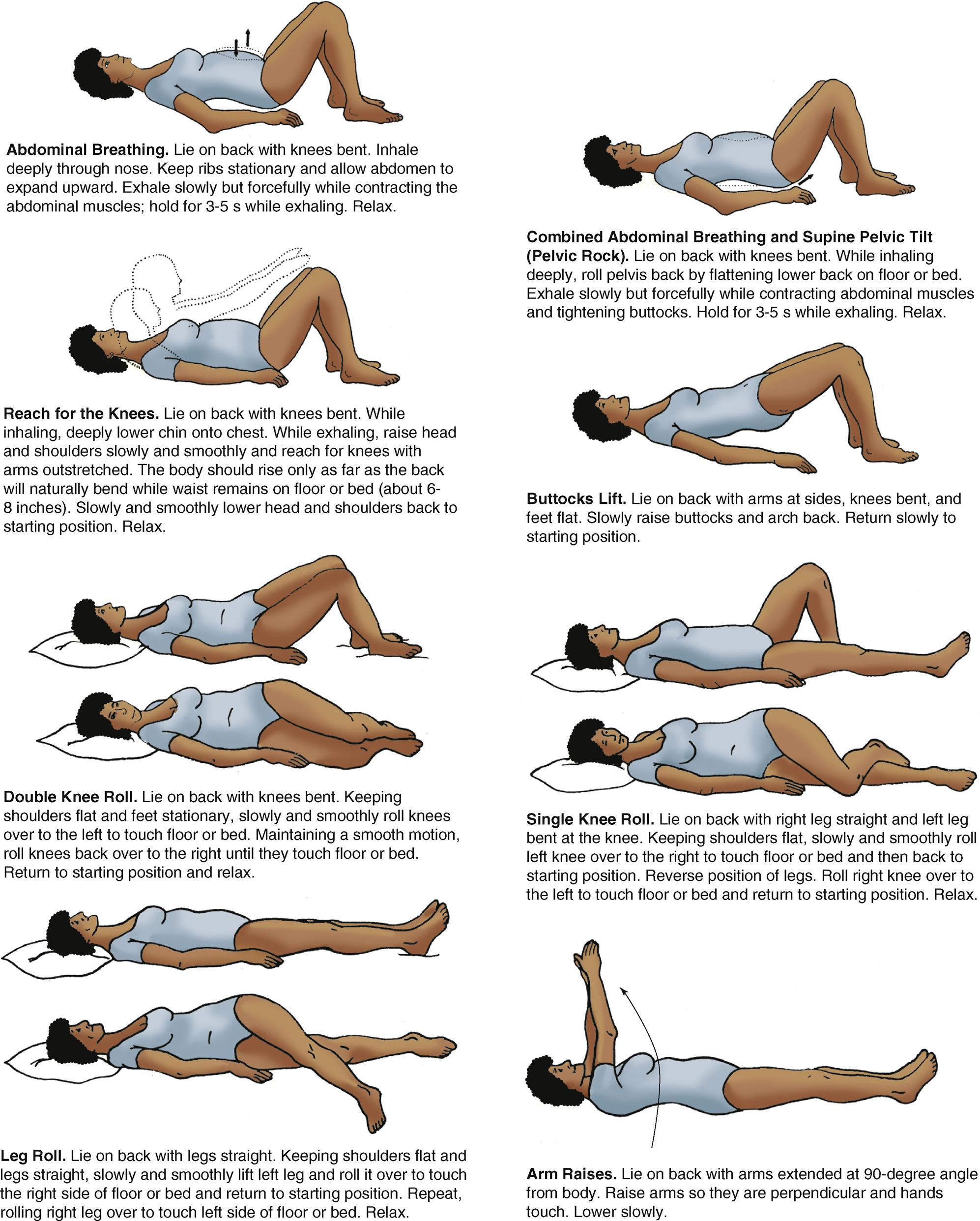
ch. 21 - should start gradually, with abdominal exercises delayed 4–6 weeks after a cesarean birth
postpartum exercise
ch. 21 - avoid rectal suppositories and enemas in women with __________ perineal lacerations due to risk of pain, hemorrhage, and infection
3rd- or 4th-degree
ch. 21 - in nonbreastfeeding mothers is common around days 3–4 and is managed with ice packs, cabbage leaves, and mild pain relievers
breast engorgement
ch. 21 - informed consent for __________ must include side effects and the need to avoid pregnancy for 28 days post-vaccination
postpartum rubella and varicella vaccines
ch. 21 - women receiving both Rh immune globulin and rubella vaccine must be retested for rubella immunity in __________ and revaccinated if needed
3 months
ch. 21 - prevents immune response in Rh-negative women exposed to Rh-positive fetal blood
Rh immune globulin action
ch. 21 - given at 26–28 weeks gestation and within 72 hours after Rh-positive fetal exposure (e.g., birth, miscarriage, trauma, procedures)
Rh immune globulin indications
ch. 21 - 300 mcg IM postpartum/antepartum; 50 mcg IM for early pregnancy loss; Rhophylac may be given IM or IV
Rh immune globulin dosage/route
ch. 21 - mild fever, injection site soreness, malaise, headache; rarely nausea, hypotension, or allergic reaction
Rh immune globulin side effects
ch. 21 - confirm Rh status and Coombs test, explain purpose and risks, obtain consent, monitor for 20 min post-injection, and document thoroughly
Rh immune globulin nursing considerations
ch. 21 - report signs of __________ such as depression, negative self-image, lack of bonding, poor support, or refusal to care for the baby
postpartum psychosocial complications
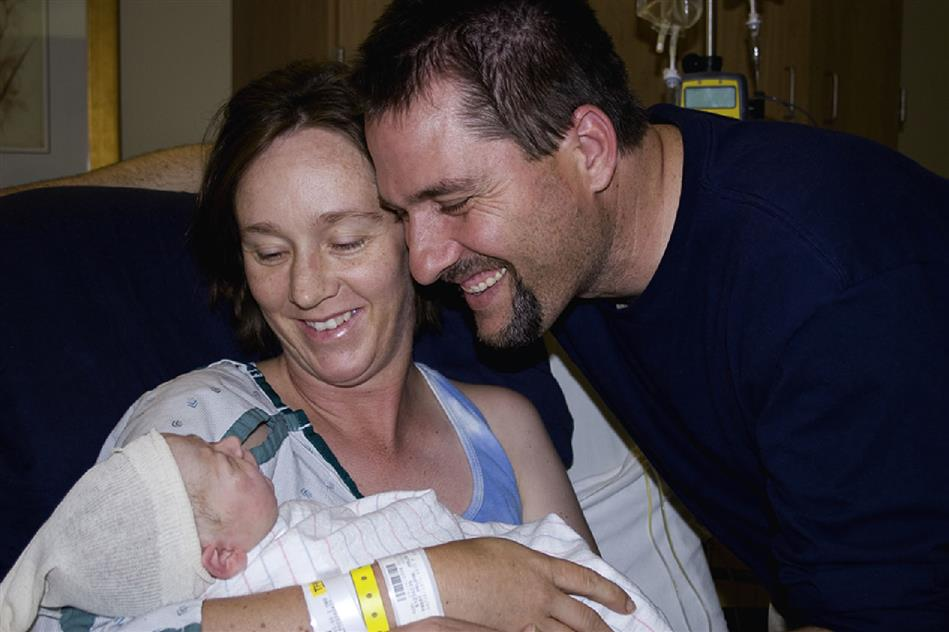
ch. 21 - involves assessing emotional responses and family interactions, then providing education and encouragement tailored to their cultural values
supporting new parents
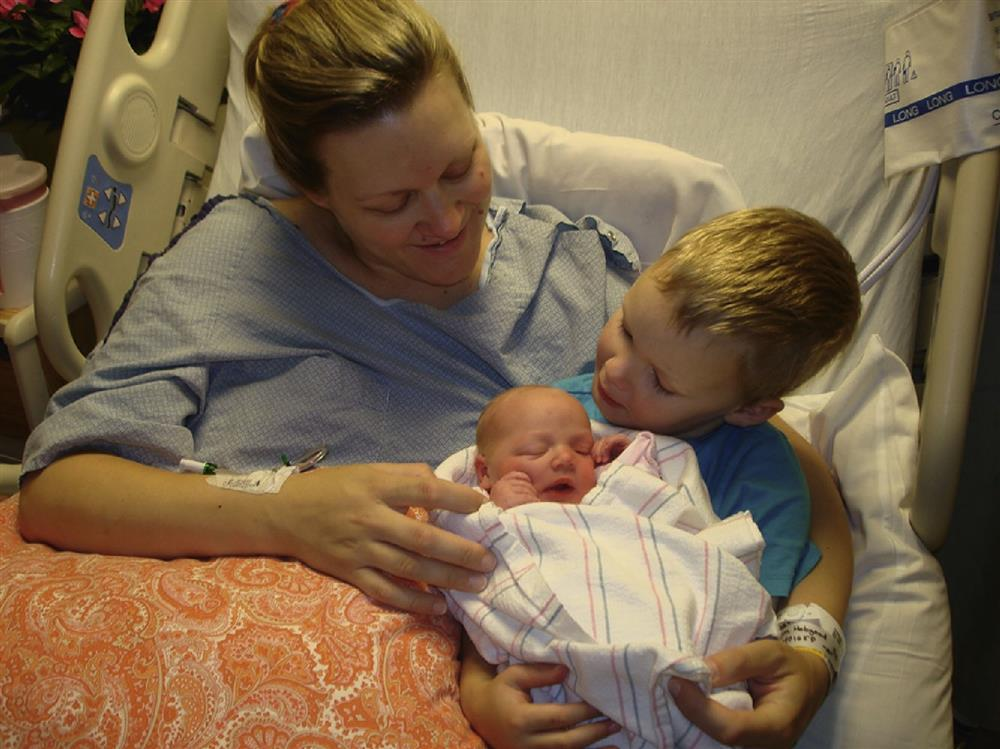
ch. 21 - a new mother’s adjustment is shaped by __________; nurses can support her by identifying potential conflicts and helping plan strategies before discharge
family dynamics
ch. 21 - always assess for __________ therapies postpartum, as they may interact adversely with prescribed medications
complementary or herbal
ch. 21 - “doing the month” includes staying home, eating warm foods, avoiding bathing, and minimizing activity to restore body heat
Asian culture
ch. 21 - during la cuarentena, women rest, avoid cold, eat broths, wear a faja, and abstain from sex for 40 days
Hispanic/Latino culture
ch. 21 - avoid giving __________ meds before discharge if the mother will hold the baby; ensure newborn is secured in a car seat for transport
drowsiness-causing
ch. 21 - may resume around 2–6 weeks postpartum when healed; use lubrication, choose comfortable positions, expect less arousal, and do Kegels to aid recovery
sexual activity
ch. 21 - is a non-emergency support phone service for new parents to address concerns like feeding, crying, or sibling issues after discharge
a warm line
ch. 22 - refers to the parent’s emotional connection to the infant, typically forming in the early days and weeks after birth
bonding
ch. 22 - is a mutual, secure relationship that develops over the first year and provides the infant with comfort and protection
attachment
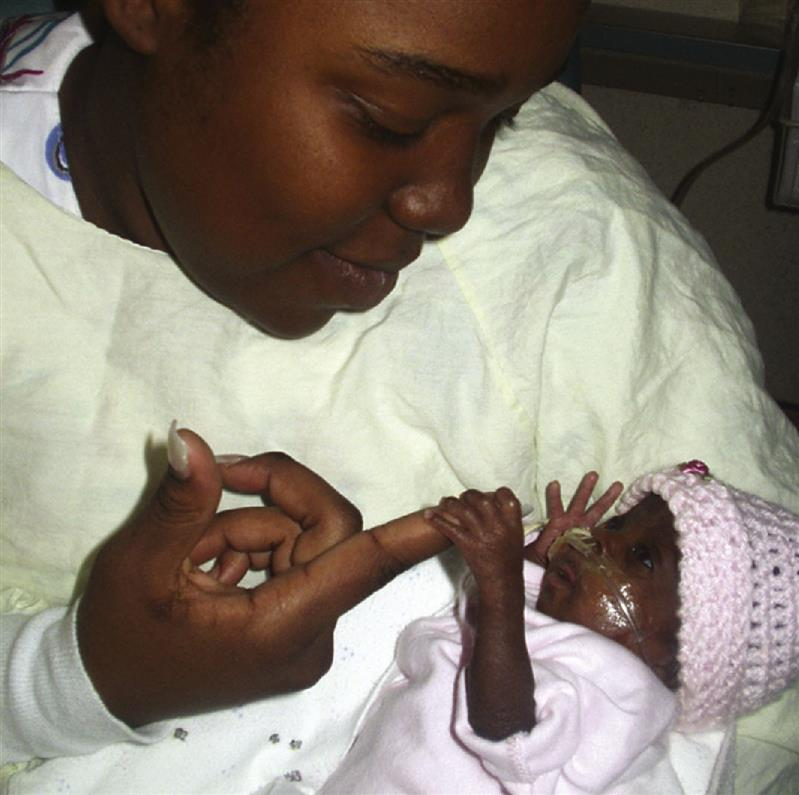
ch. 22 - starts in pregnancy and grows through positive interactions that help parents connect with and claim the infant as family
bonding
ch. 22 - eye contact, smiling, cuddling, easy feeding, consolability, and showing preference for parents promote bonding
facilitating behaviors
ch. 22 - gaze aversion, inconsolable crying, poor feeding, stiffening when held, and lack of parental recognition may hinder bonding
inhibiting behaviors
ch. 22 - eye contact, touching, talking, smiling, claiming the infant, and interpreting needs show bonding and positive engagement
facilitating behaviors
ch. 22 - avoiding contact, ignoring the infant, expressing disappointment, or misinterpreting needs may hinder bonding and attachment
inhibiting behaviors
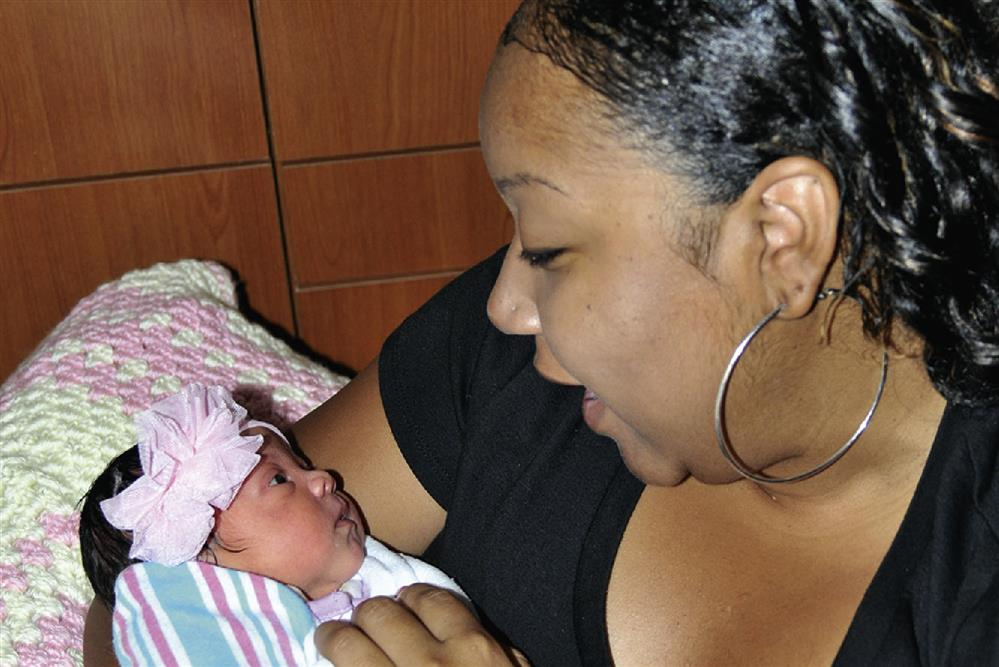
ch. 22 - __________, a key part of bonding, involves parents using eye contact, touch, and interaction to get to know their infant, including in adoptive families
acquaintance
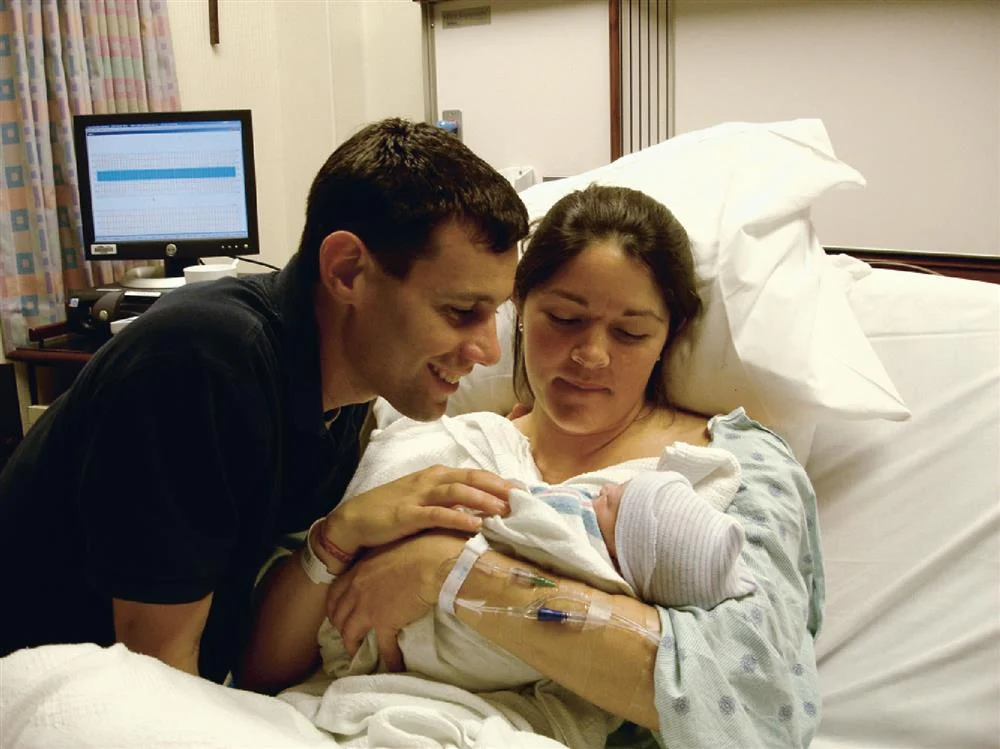
ch. 22 - is how parents recognize the infant’s traits to connect and integrate them into the family, regardless of biological ties
claiming
ch. 22 - by observing parent-infant interaction, including touch, eye contact, affection, naming, and response to infant cues
assess bonding
ch. 22 - for delayed bonding include unintended pregnancy, mental health issues, birth complications, cesarean delivery, and substance use
maternal risk factors
ch. 22 - include prematurity, NICU separation, congenital conditions, and difficult temperament
newborn risk factors
ch. 22 - is a newborn’s rhythmic movement in response to a parent’s voice, fostering early communication and bonding
entrainment
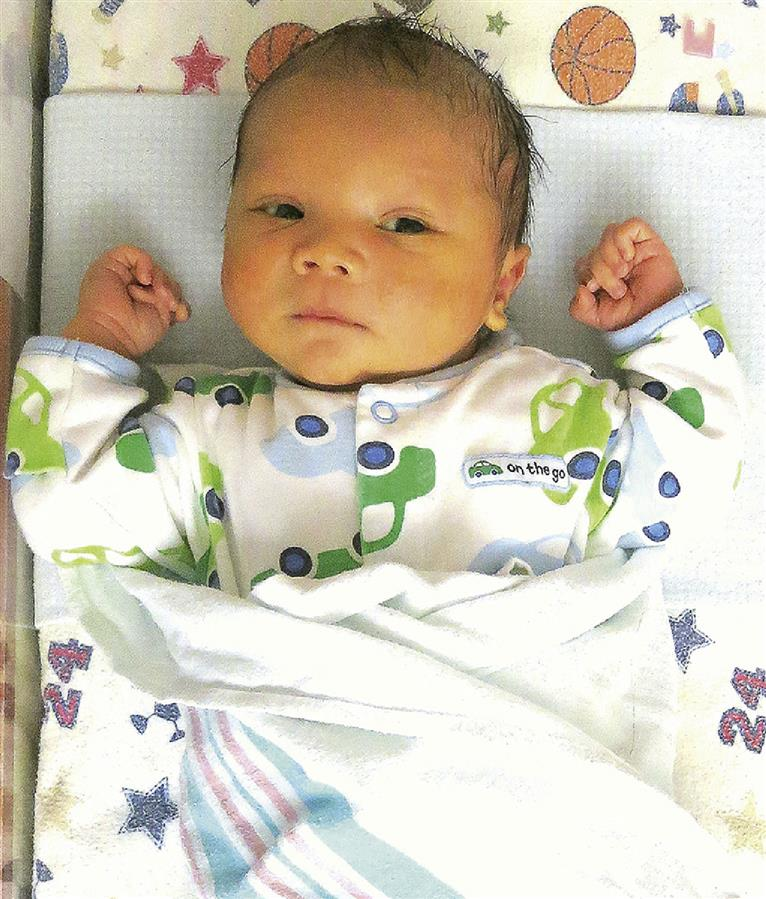
ch. 22 - is a newborn’s natural alignment with the mother’s rhythms; responsive care helps establish the infant’s own rhythm and strengthens bonding
biorhythmicity
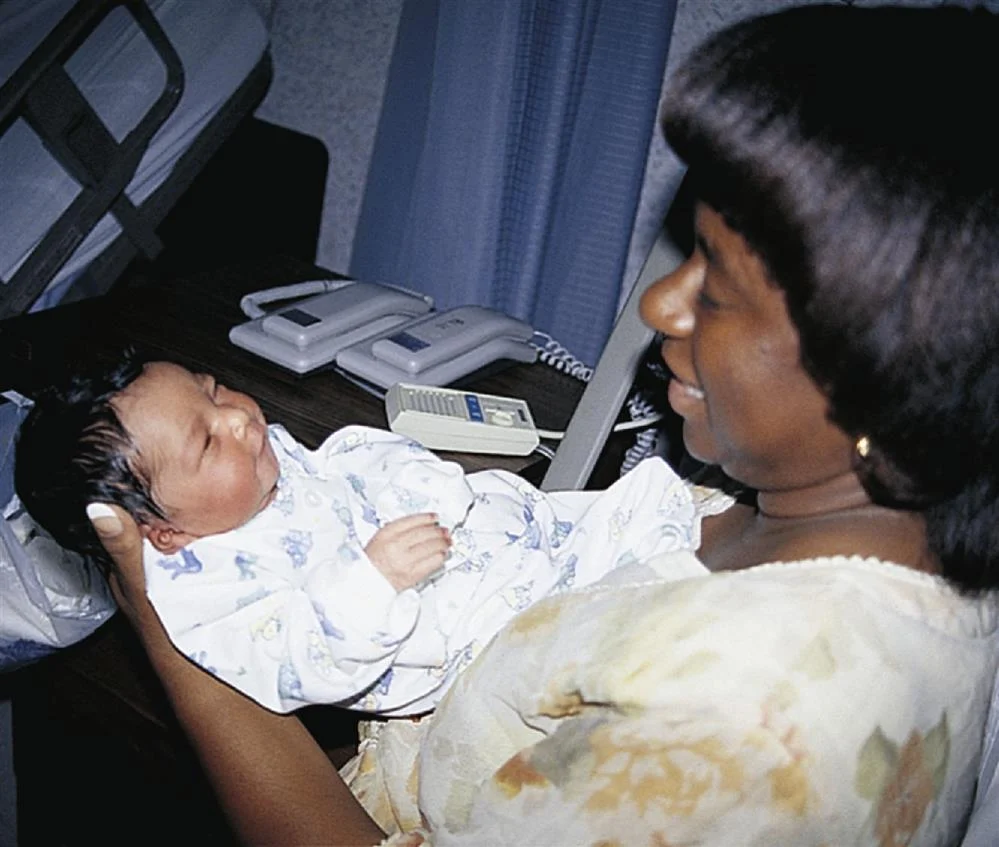
ch. 22 - is the rewarding connection formed when parents accurately respond to their infant’s cues
synchrony
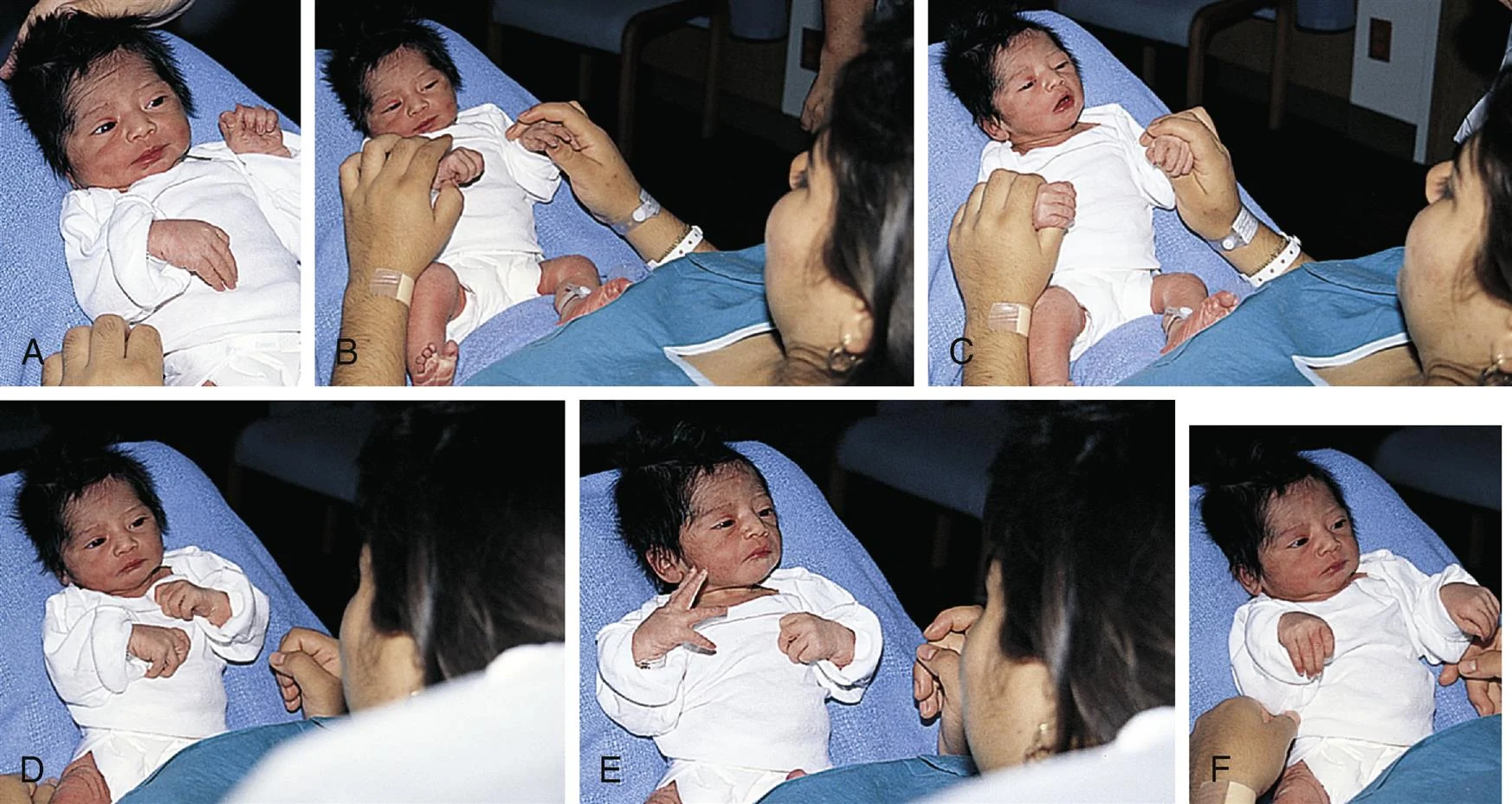
ch. 22 - infants communicate through gaze and expression; parents must recognize attention limits and signs of __________
overstimulation
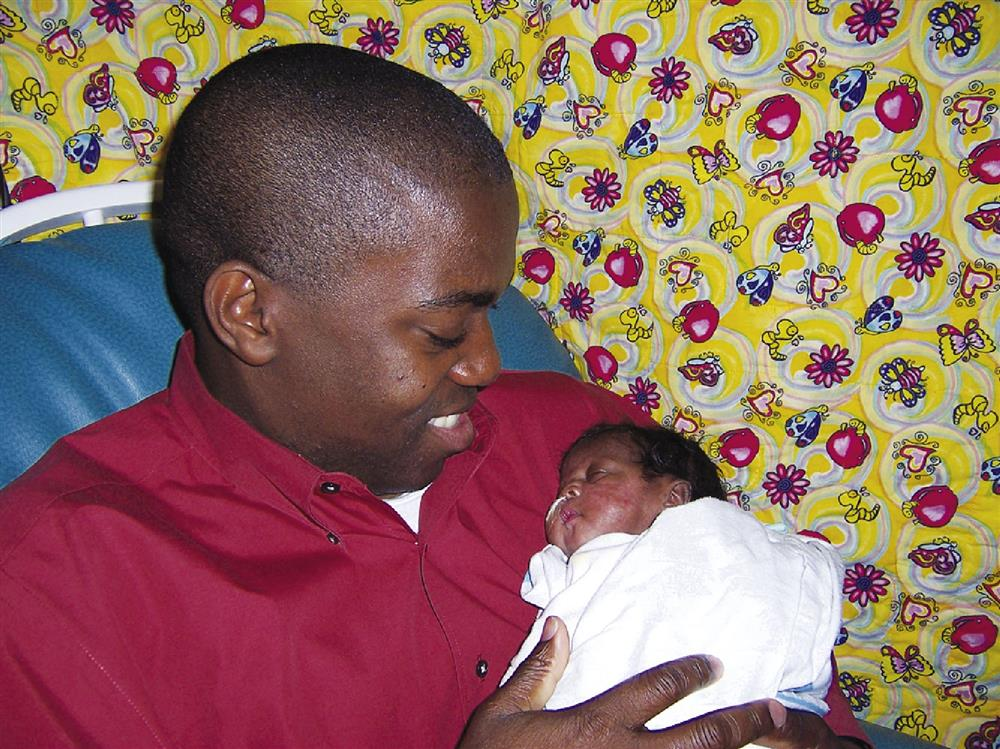
ch. 22 - describes a father’s deep interest and emotional connection with his newborn, marked by touch, eye contact, and a strong sense of bonding
engrossment
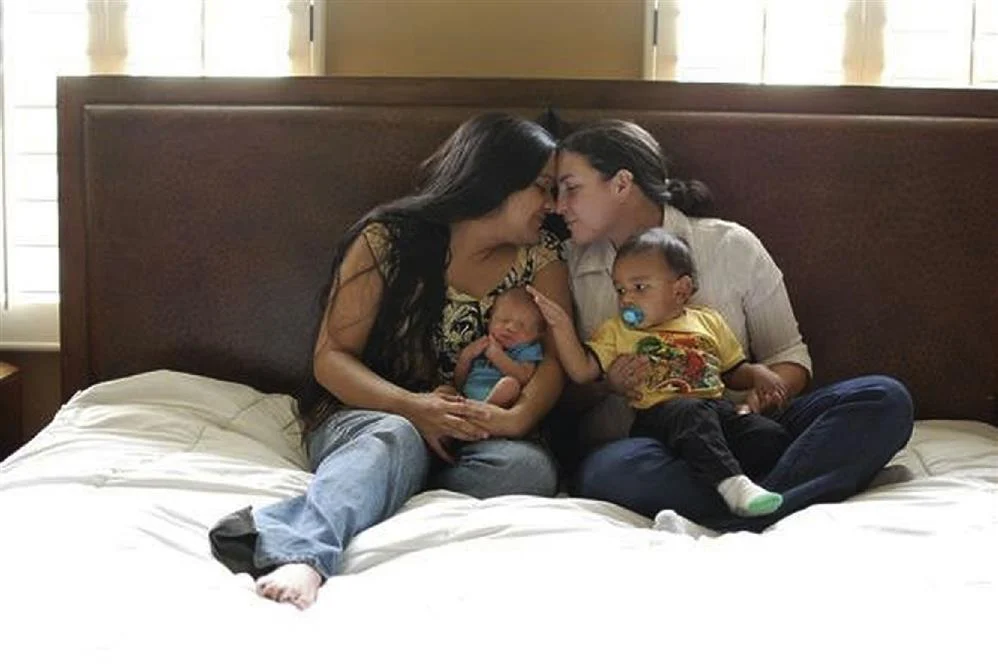
ch. 22 - may involve ARTs or adoption, with options like donor insemination, egg sharing, or surrogacy, though discrimination can occur
sexual and gender minority (SGM) parenthood
ch. 22 - need clear verbal instructions, tactile demonstrations, orientation to surroundings, and hands-on opportunities to learn infant care
visually impaired parents
ch. 22 - communicate with __________ using clear speech, visual aids, written materials, and by honoring their communication preferences
hearing-impaired parents
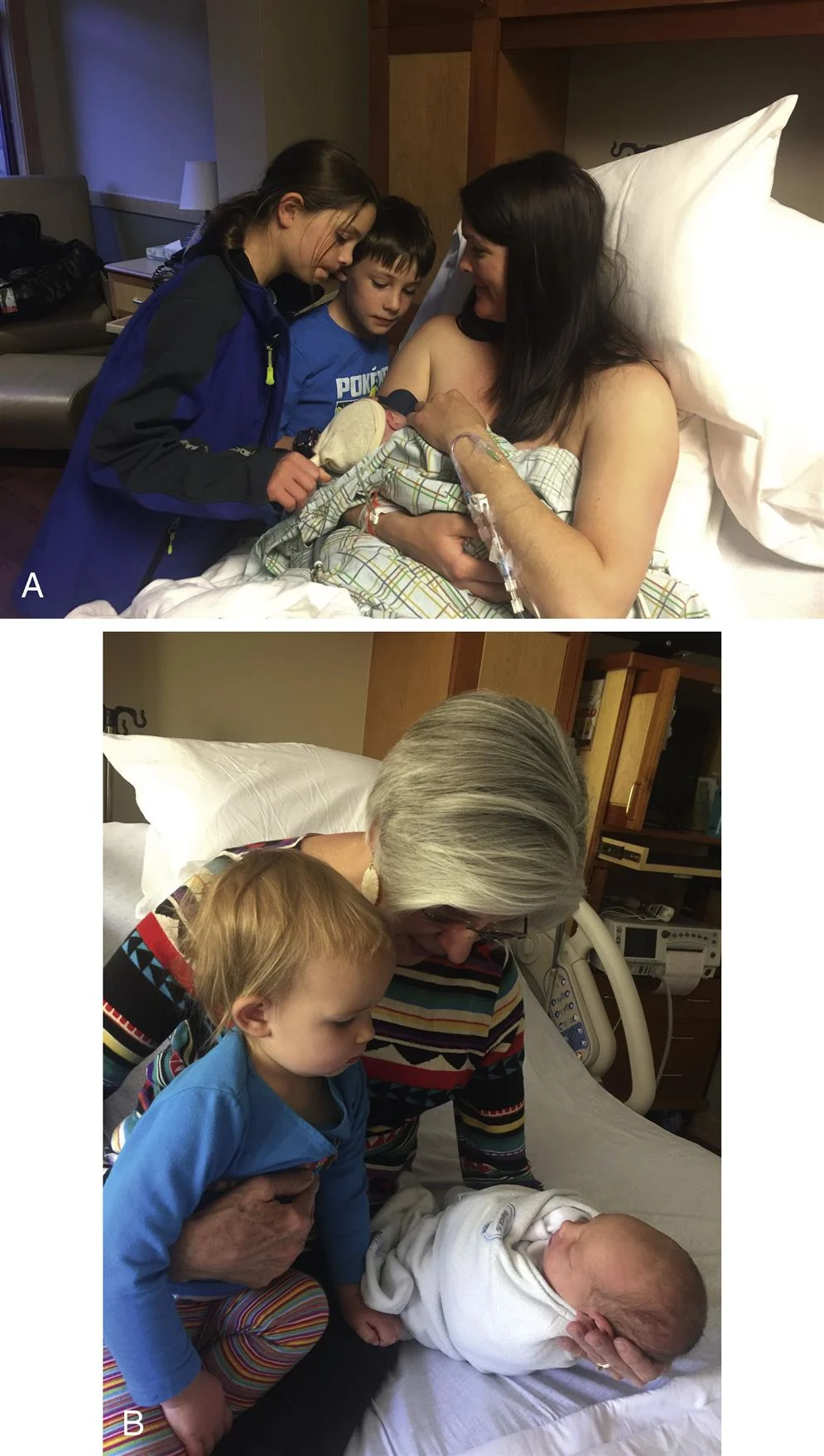
ch. 22 - to a new baby can include increased independence or concern, but may also involve regression, aggression, or attention-seeking behaviors
sibling reactions
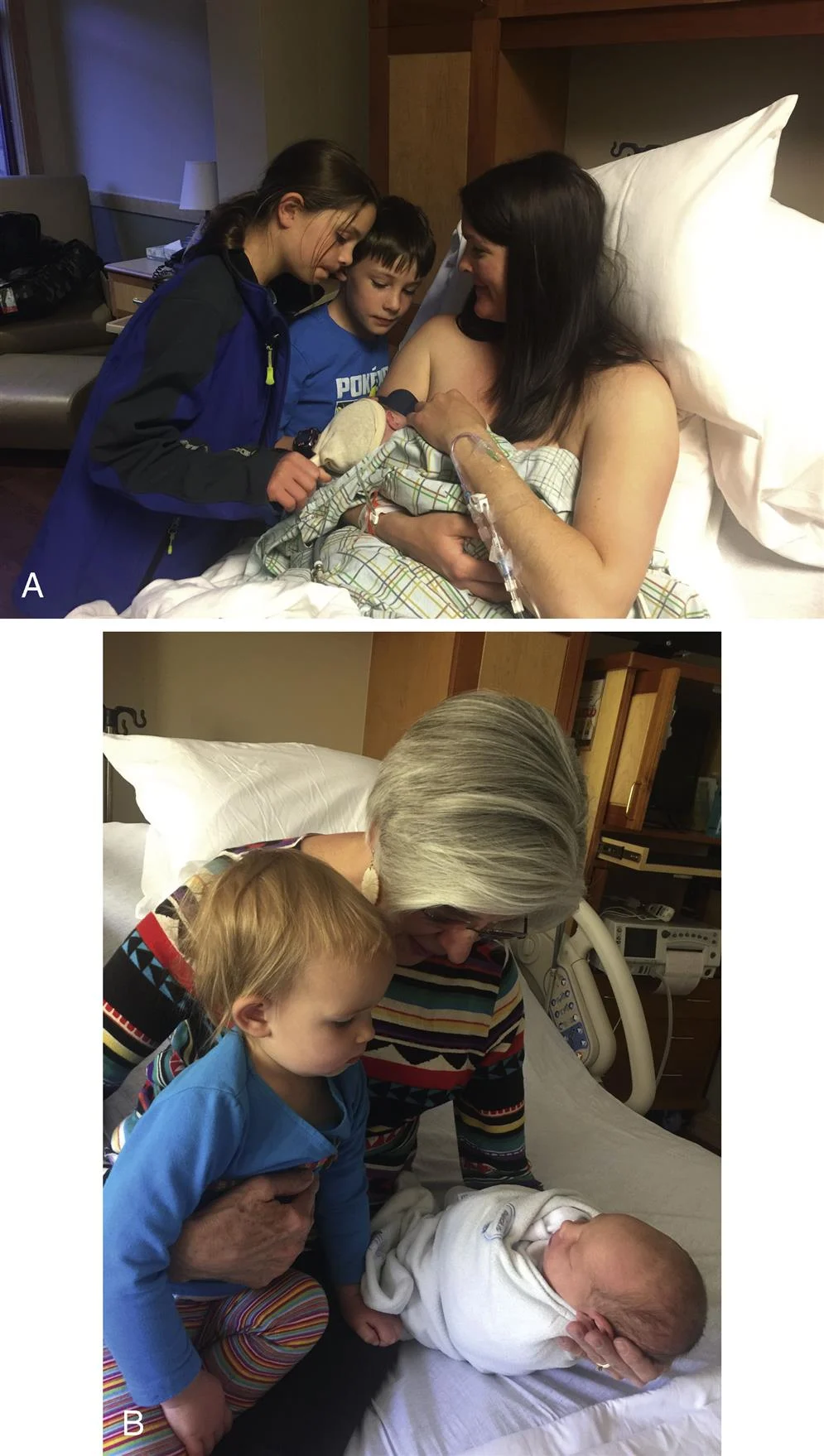
ch. 22 - influence sibling reactions; jealousy is common, so using strategies to support sibling acceptance is key to easing the transition
parents’ attitudes
ch. 22 - involve the child in preparations, answer questions, visit newborns, and attend sibling prep classes to set expectations
prenatal
ch. 22 - welcome the child warmly, don’t force interaction, encourage gentle exploration, and offer a sibling gift
during hospital stay
ch. 22 - have another adult present to support the child and allow you to greet them with full attention
going home
ch. 22 - create one-on-one time, include the child during feedings, give small gifts, and praise age-appropriate behavior
at home
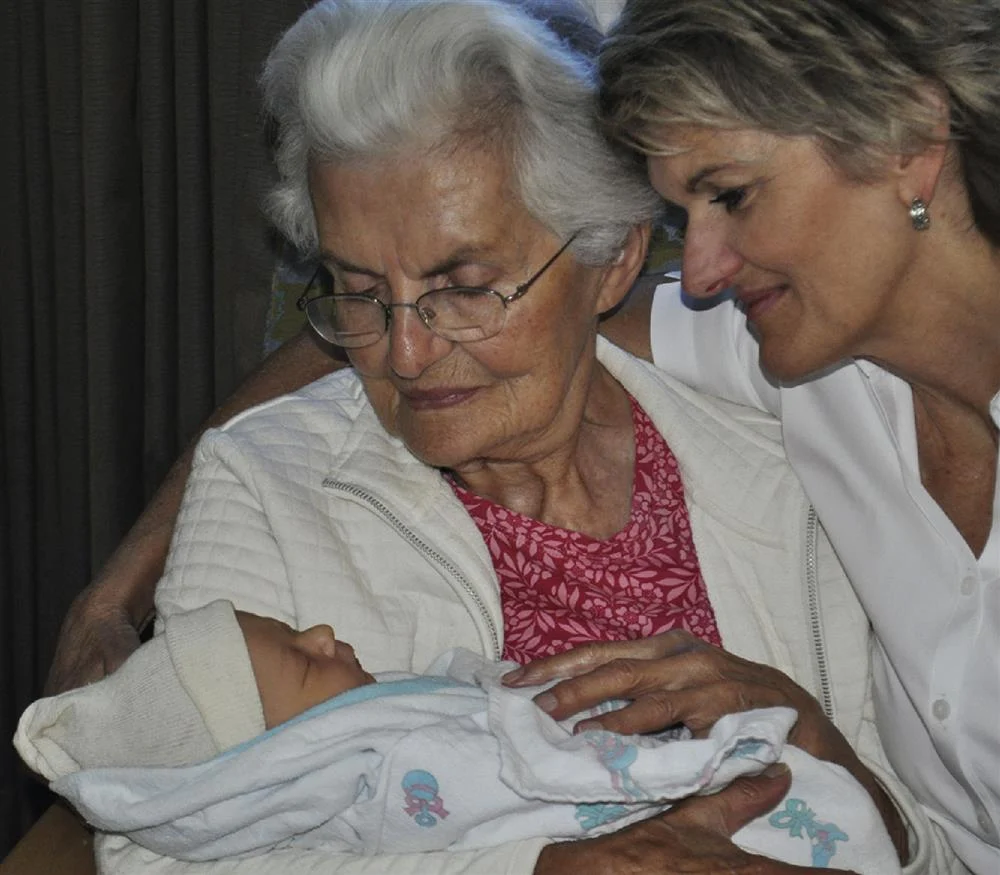
ch. 22 - varies by culture and proximity, with maternal grandparents often more involved than paternal ones in U.S. families
grandparent involvement
ch. 25 - provide evidence-based support for all __________ through coordinated prenatal and post-discharge care
feeding methods
ch. 25 - do not give water to infants; it can reduce calorie intake and risk __________ leading to seizures
hyponatremia
ch. 25 - lowers risk of SIDS, infections, chronic diseases, obesity, and supports brain development
infant benefits
ch. 25 - decreases risk of cancers, type 2 diabetes, hypertension, and strengthens bonding
maternal benefits